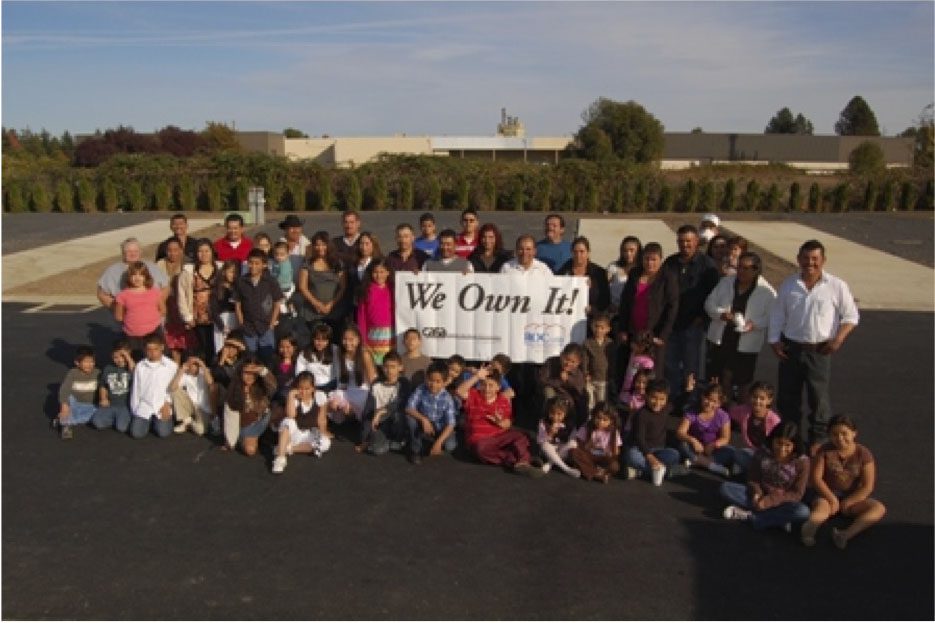
Certainly, there are caveats. The basic “rent or own” framework itself masks major blind spots. As John Davis wrote in Rooflines last year: “In the middle, there are too few rungs between renting and owning. Renters of modest means are left with little choice but to try their luck at leaping the gap between a form of housing with too few rights and rewards toward a form of housing with too many responsibilities and significant risks … nearly half of the low-income households who manage to climb into homeownership revert to renting within five years.”
Community land trusts, inclusionary zoning, and limited equity housing cooperatives, of course, are all methods of “shared equity housing” that seek to fill this gap. While shared equity’s reach falls far short of the need—Davis colorfully claims that if our nation’s shared equity housing sector were a country, its profile would be on a par with Grenada—the goal of building ownership is squarely in the sights of community economic development practitioners. And public policy, while deeply flawed in its nearly exclusive focus on single-family home ownership, at least sees promoting widespread ownership to be a valid and important goal.
In contrast to housing, where a large majority of Americans remain owners, in business the overwhelming majority are “renters” if you will. A key, albeit daunting, challenge for our field is to change this ownership picture.
To understand the scale of the challenge, consider that according to pre-Recession data analyzed by Ed Wolff, an economist at New York University, as of 2007 the top one percent of households owned 9.4 percent of housing assets, but 38.3 percent of stock and nearly half (49.7 percent) of investment (that is, business) assets. If you can envision a community where the top one percent of households owned half of all housing value, you would get a picture of our actual business world today.
Moreover, the concentration of wealth is getting worse over time—rapidly so. A Pew study last year found that the bottom 93 percent of households lost $600 billion in assets between 2009 and 2011, even as the top seven percent gained $5.6 trillion. Wealthier families lost housing wealth too, but made up for that with growing business assets.
My organization’s website, Community-Wealth.org, profiles strategies such as cooperatives, employee ownership, and social enterprise that can build community wealth from within.
The trajectory to date is a classic good news, bad news story. On the positive side, an estimated 11 million Americans now own all or part of their companies through their employee stock ownership plan (ESOP) contributions, with a total asset value of $870 billion. Co-ops have an employment impact of 2 million, $650 billion in revenues, and $3 trillion in assets.
Unfortunately, these market advances remain largely disconnected from community developers. CDCs and others often support small business training and retail development, but community business ownership is rarely part of the mix. And while entrepreneurship programs can be valuable, Davis’ caution about low-income families sometimes taking on “too many responsibilities and significant risks” with single-family homeownership surely applies to small business formation, given its high failure rate. Like shared equity housing, in business we need strategies that mitigate risk, while building wealth, for people of modest means.
The importance of this work cannot be overstated. Our nation’s growing concentration of wealth has corrupted our political system, enabling those who hold the ownership to literally call the shots. Thus, last fall the state of Washington approved a subsidy of $8.7 billion over 16 years for the long-suffering Boeing Corporation, a state guarantee of $500 million-plus a year until 2030 to keep production in the Seattle area.
Perhaps even more obscene is the estimated $285 million in state and local funds being doled out by the state of Michigan and the bankrupt city of Detroit to give the Red Wings hockey team a new stadium. Detroit’s “emergency manager” Kevyn Orr may have put it best when he said: “I know there’s a lot of emotional concern about should we be spending the money. But frankly that’s part of the economic development”—inadvertently naming the problem (!). It happens that Red Wings owners Marian and Mike Ilitch and family have a net worth of $3.2 billion. Just possibly a new stadium could be built without city largesse.
The challenge we face is immense. Fortunately, positive examples, such as the San Francisco Bay Area’s Women’s Action to Gain Economic Security (WAGES), the Cincinnati Union Co-op Initiative and the Evergreen Cooperatives in Cleveland (where The Democracy Collaborative has worked) are proliferating. That said, these efforts remain small, with revenues in the millions of dollars. Still, if we really wish to build community wealth, deepening our efforts to generate the infrastructure to support much more broadly shared business wealth is a critical step.





Comments